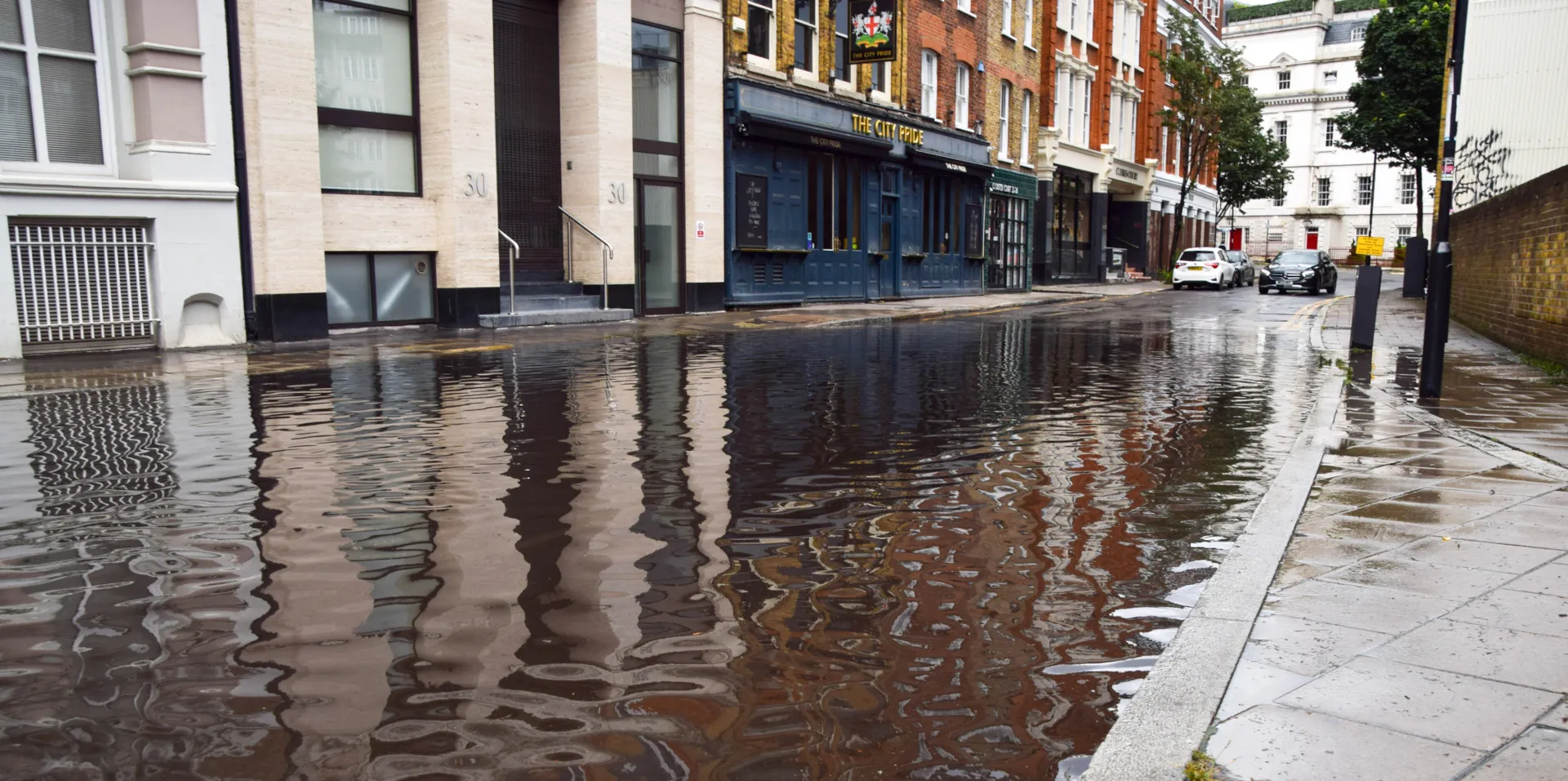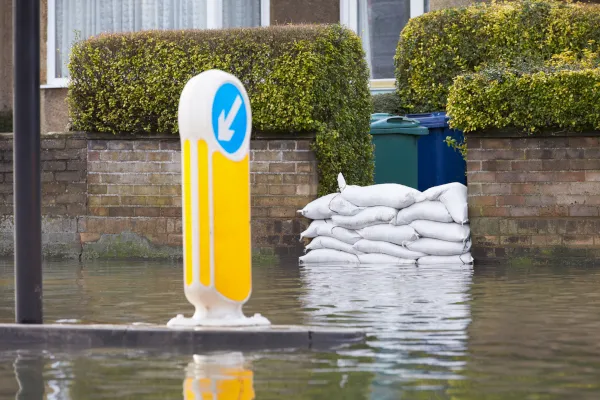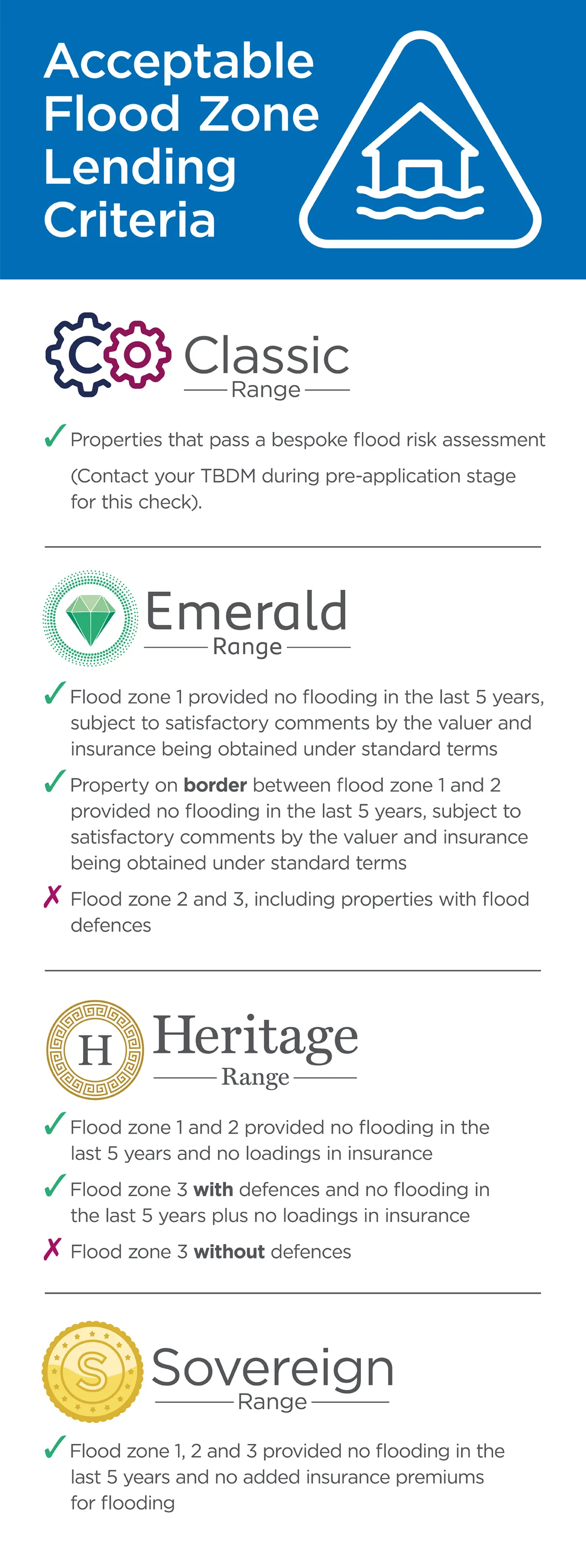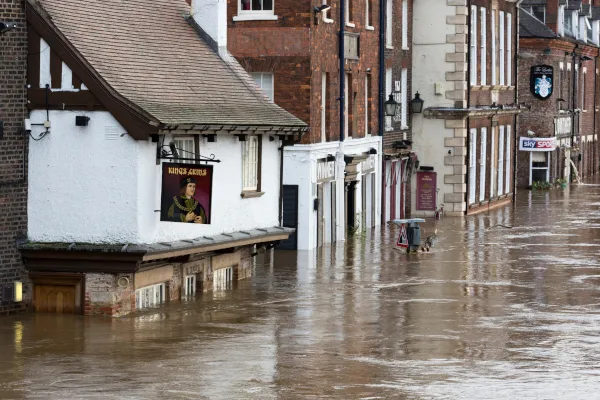Supporting you with relevant insight
Flood Zones and Climate Change
Discover how flood zones can impact applications.

Jake Wilson
13 May, 2024

Subscribe to our Newsletter on all things later finance
Join our monthly newsletter today.
Company email
By subscribing, you agree to our Privacy Policy and to receive our newsletter.
The UK is now more than 7% wetter with extreme weather expected in the future, as found by the Met Office in their ‘Charting the UK's changing climate’ report 1. On top of that the Environment Agency2 estimated one in six properties in England could be at risk from flooding.
January 2025 update: 6.3 million properties are now at risk of flooding as they're based in areas that may be overwhelmed by one, or a combination of, rivers, the sea, and surface water. This new report by the Environment Agency3 increases the flood risk to almost one in four properties in England.
It's not too surprising then that flooding has been recorded as one of the most searched for lending features of lifetime mortgages on our online criteria tool. Inspired by the reports and data trend in our online queries, I decided to investigate how lifetime mortgage applications are influenced by flood zones and climate change.
In this article, I'll explore the UK's different flood zones, how they impact lending conditions, and what financial advisers like yourself need to be aware of to support your client's later-life borrowing goals.
What flood zones does the UK have?
Flood zones are areas rated by how likely they are to get flooded by rivers or seas, without considering flood defences. It's part of the Environment Agency's national scale modelling project and the areas are regularly updated using recorded flood extents and local detailed modelling.
-
Flood zone 1:
Defined as having the lowest probability risk of flooding per year, aka a 1 in 1,000 chance. Clients will have the least difficulty securing a lifetime mortgage in this zone. -
Flood zone 2:
Defined as having a medium probability risk of flooding per year with a 0.1-1% chance of river flooding and 0.1-0.5% chance of flooding from sea water.
-
Flood zone 3:
Defined as a ‘flood-prone’ area, combining both a high-probability risk of flooding that is greater than 1% per annum and properties built on ‘functional floodplains’. While the Environment Agency and UK government splits this zone into 3a and 3b, mortgage lenders consolidate this zone to simplify risk assessment and ensure consistency.
As lenders we focus on overall risk rather than fine-grained distinctions between subzones. While the UK's flood zones are relevant, we nevertheless work closely with surveyors and flood risk experts to provide a fair evaluation.
How do flood zones impact lifetime mortgage applications?
As lifetime mortgage lenders we use a combination of flood zones and bespoke flood risk reports to assess a property against our different products and their individual lending criteria.
Due to the length and nature of a lifetime mortgage, resaleability is crucial for us as it guarantees the property's value can cover the loan repayment when the borrower enters long-term care or passes away. That's why we encourage our registered advisers to contact our intermediary sales team to discuss any cases where the adviser may have concerns regarding flood zones and subsequent checks.
Several of our lifetime mortgage products accept properties in flood zone 1 provided the property hasn't flooded in the last five years. However, each of our lifetime mortgages treat flood zones differently, so it is always worth consulting this article, or talking to our intermediary sales team.
-
For our Classic lifetime mortgage we complete independent, bespoke checks as standard by partnering with flood risk assessment experts, who use state of the art flood prediction technology. Before you finalise an application for a case, simply contact your regional TBDM in the pre-application stages to get your client's property checked. This way, you can make sure that the lending conditions suit your client's situation.
-
Our Emerald products are suitable for properties in flood zone 1 and properties in zone 1 bordering flood zone 2, provided there has been no flooding in the last 5 years, and subject to satisfactory comments by the valuer and insurance being obtained under standard terms.
Properties in flood zones 2 and 3 are more complex cases, however, there are circumstances where steps can be taken to secure the loan.
-
Our Heritage lifetime mortgages can be considered for flood zone 3 provided there are flood defences in place, no loadings in insurance and no flooding in the last five years.
-
Our Sovereign lifetime mortgages will consider all properties in flood zones 1, 2 and 3, providing that the property hasn't flooded in the last 5 years, and subject to buildings insurance being offered on standard terms with no additional premiums payable for flooding.
Here's a useful graphic which summarises our acceptable flood zone lending criteria:
While these are the overall lending conditions when it comes to flooding, our underwriting team is on hand to explore if any alternative actions can be taken to secure the loan.
How does climate change impact later-life lending?
Climate change is impacting the world around us and just because an area hasn't flooded before, doesn't mean it won't in the future. For example, in June 2016 the UK was subject to serious and repeated flash floods, which caused damage and disruption across the country for nearly the whole month (7th-23rd of June)4, 5.

So, while flood zones serve as a good starting point, there is still the chance that a property even in the low-risk flood zones 1 and 2 could be subject to flooding. If a client has a lifetime mortgage and their property is flooded, then this could breach their mortgage contract. As their financial adviser you can support them by explaining the terms of their lifetime mortgage.
When suitable insurance is in place
If a client has insurance in place, then, a flood, even an unexpected one, wouldn't constitute a breach of mortgage conditions, provided they include their lifetime mortgage lender in the insurance claim process.
Each of our lifetime mortgages have in-depth terms and conditions related to insurance claims and property damage. If the client doesn't notify their lender of the damage or proceed to accept a settlement with their insurance provider without a lender's consent, this would be considered a breach of mortgage conditions.
If there's no or unsuitable insurance in place
If a client has failed to adequately insure their property this is deemed a breach of the mortgage conditions. The lender would notify their insurer of the lack of insurance and the damage caused, and work with the insurer to seek a resolution. The client would not be entitled to any compensation or money claim due to their failure to insure the property. In an extreme case, if the damage has resulted in the property being uninhabitable, then, a lender may even look to take possession of the property and place it on the market.
As their adviser you'll be able to talk clients through their mortgage conditions to ensure the scenario described above doesn't happen.
A flood zone is changed during a lifetime mortgage
The Environment Agency's flood zones are assessed every few years and as highlighted in this article, zones can change due to changing weather conditions. If a client's property is placed into a higher flood zone during their lifetime mortgage, this wouldn't be classed as a breach of contract, as the client has no control over these things.
The only time a flood zone change could impact a client would be if they're applying for a further advance. As this is classed as a new loan, it would require a new valuation in the higher flood risk zone, which wouldn't guarantee access to further funds.
If the client has a drawdown facility on the back of initial lending, then they could, of course, still access this regardless of any changes to flood zones.
How valuers balance climate change and market value
“The increasing prevalence of flooding events due to climate change presents a real challenge for homeowners, valuers, and lenders. Valuers actively consider a range of risks to a property including those arising from climate change such as flooding.
When valuing a property, valuers will consider the level of flood risk, whether there have been any previous flood events and the frequency of such events. Valuers will also consider the availability of insurance as well as the general market appetite for properties in a flood-risk area.
The consideration of all these factors will support the formation of the correct property advice and an accurate opinion of market value. ”, Countrywide Surveyors Limited.
Explore lending criteria with ease
Lending criteria is different for each of our lifetime mortgages, and we aim to help you find the best match for your clients. You can easily search through lending conditions using search terms, such as ‘flooding’, ‘flat roofs’ or ‘maximum age’, to find the right mortgage for your clients with our criteria tool. Follow the link to try it for yourself.
And if you have a specific lending criteria question, contact your local BDM or TBDM who will happily support you. Find your local contacts using the ‘Find my BDM’ map here.
References:
1. “New Climate Normal,” Met Office https://www.metoffice.gov.uk/about-us/news-and-media/media-centre/weather-and-climate-news/2021/9120-new-climate-normal
2. “Investing for the Future,” Folkestone & Hythe District Council, https://service.folkestone-hythe.gov.uk/webapp/lydd-airport/CORE%20DOCS/CD12/CD12.13%20Investing%20for%20the%20future%20EA.pdf
3. “Flood risk climbs to 6.3 million properties: Environment Agency”, Mortgage Strategy, https://www.mortgagestrategy.co.uk/news/flood-risk-climbs-to-6-3-million-properties-environment-agency/
4. “2016 United Kingdom Floods”, https://en.wikipedia.org/wiki/2016_United_Kingdom_flood
5. “Flash flooding causes chaos in parts of England”, BBC, https://www.bbc.co.uk/news/uk-england-london-36471889
Our resources
Explore more of our resources tailored to supporting equity release advisers like you in succeeding.




